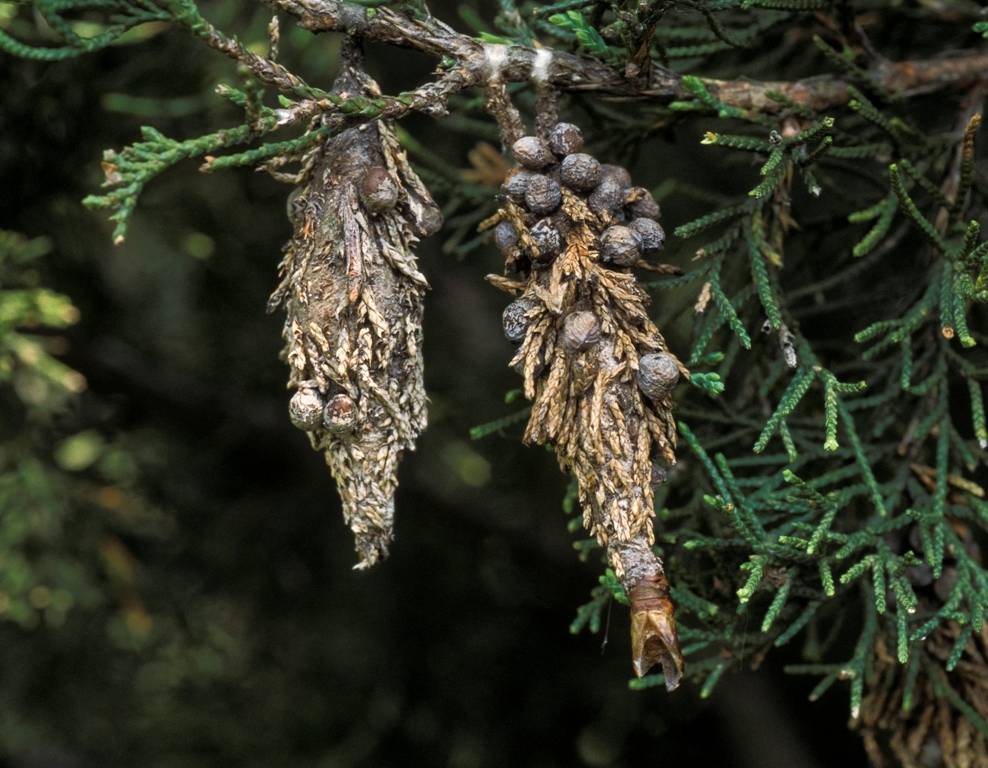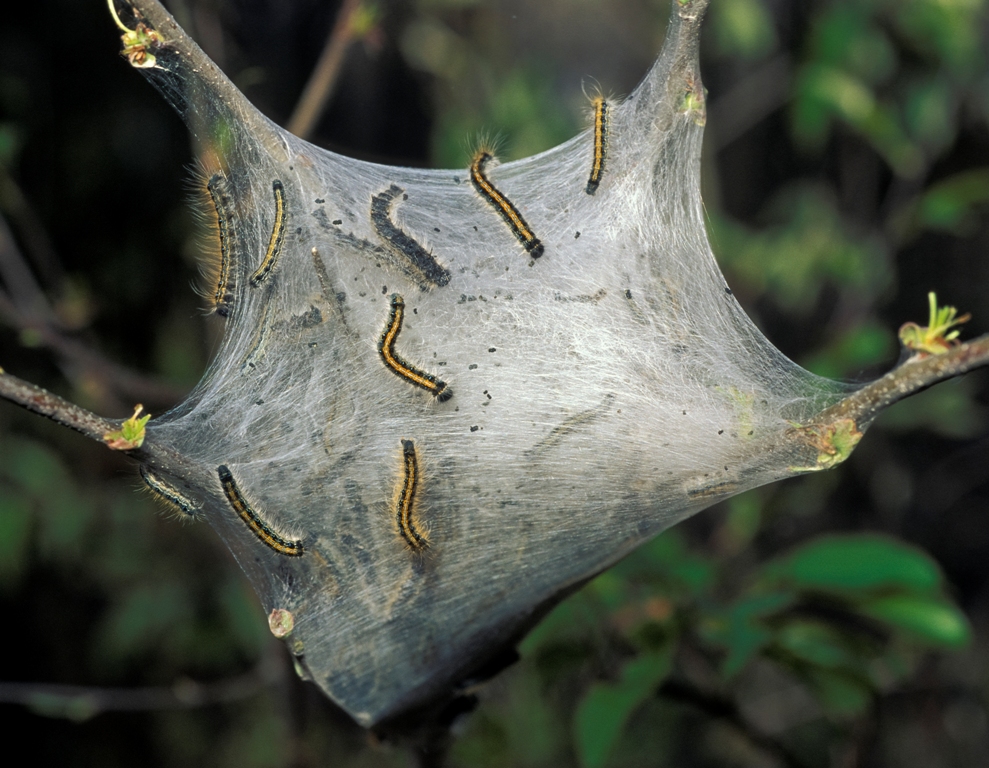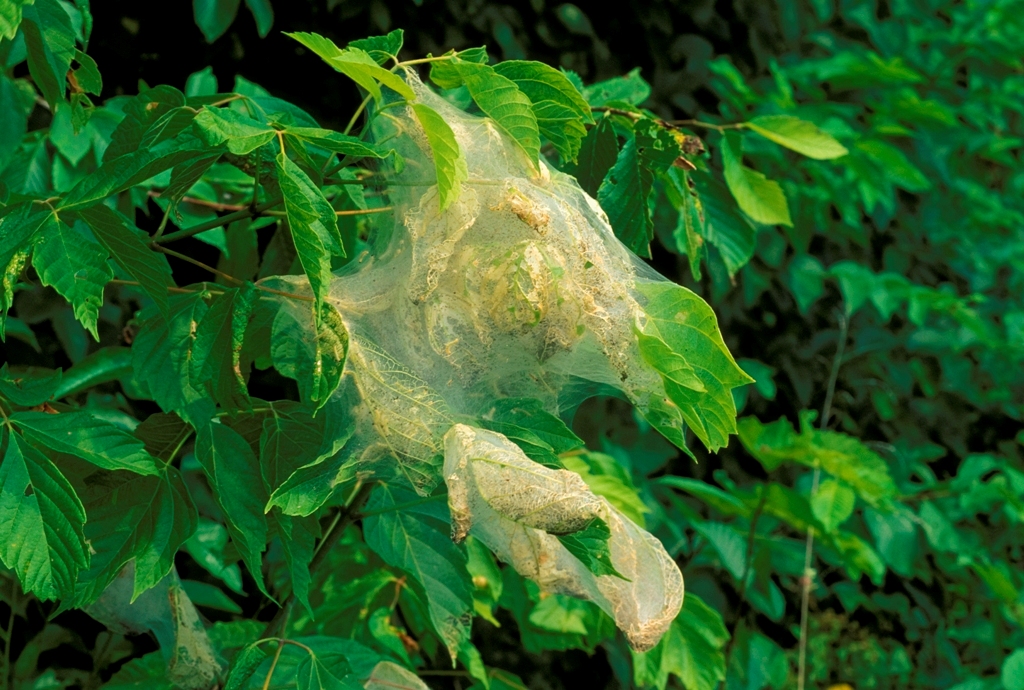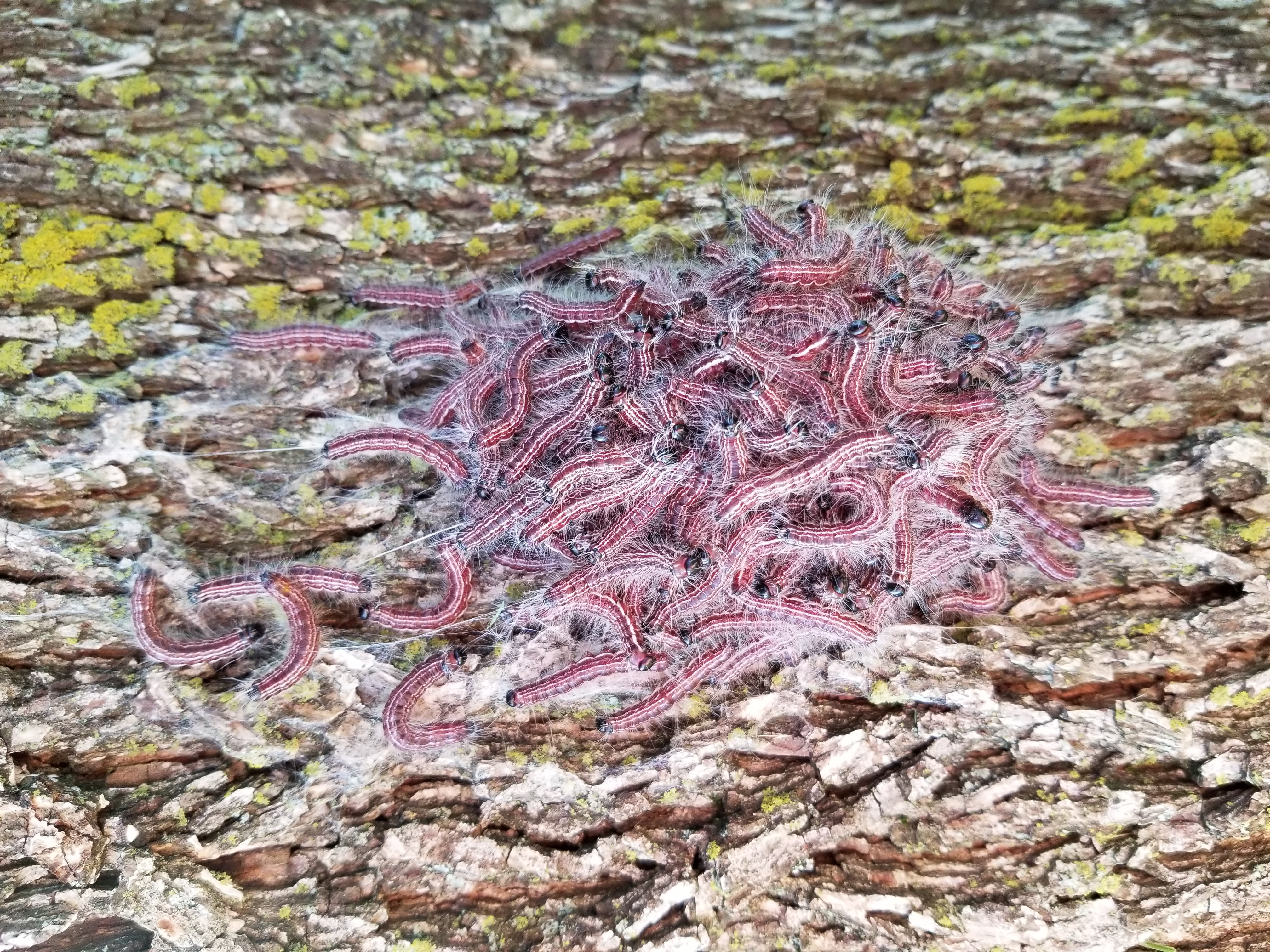Not all caterpillars cause serious damage when they feed on tree leaves and needles. However, high populations of some species can be a tree health concern since they consume so many leaves that they can weaken the tree. These caterpillars are known as defoliators. Find information below on common caterpillar species that defoliate trees in Missouri and what you can do to protect your trees.

Bagworms (Thyridopteryx ephemeraeformis) are a common, native moth found throughout North America. Caterpillars carry a silken bag and attach clipped foliage as camouflage. Caterpillars enlarge the bag as they grow. Eggs overwinter in bags and tiny caterpillars hatch late the following spring. Unchecked, these caterpillars can completely defoliate small trees.
Tree Species Affected
Bagworm caterpillars prefer eastern red cedar, junipers, arborvitae, pine, and spruce but will also feed on deciduous trees such as maple, oak, black locust, and sycamore.
Control Recommendation
Prior to spring, remove and destroy the previous year’s bags from trees. During the summer, remove bagworms by handpicking and dropping into soapy water. If handpicking is not practical, spray insecticides when caterpillars are still small (usually early to mid-June). Recommended insecticides contain Bacillus thuringiensis kurstaki, beta-cypermethrin, cyfluthrin, or spinosad.

The eastern tent caterpillar (Malacosoma americanum) is a moth native to the United States. Caterpillars hatch from overwintering eggs in early spring and build silken tents in the branch crotches of trees. Caterpillars feed outside tents during mild weather. Mature caterpillars leave tents and seek sheltered places to pupate but cause no further feeding damage.
Tree Species Affected
Caterpillars feed on many deciduous trees, including wild plum, black cherry, apple, crabapple, and hawthorn.
Control Recommendation
Remove tents and drop caterpillars into soapy water. To encourage predation by wildlife, tear open webs using a long stick with a nail driven through the end. Insecticidal control is generally not necessary. If insecticides are used, spray trees in early spring when tents are first noticed using a product containing Bacillus thuringiensis kurstaki, spinosad, neem oil, acephate, bifenthrin, cyfluthrin, permethrin, or zeta-cypermethrin.

Fall webworms (Hyphantria cunea) are a common, native moth found throughout North America. The webworm caterpillar is often confused with the eastern tent caterpillar, but fall webworm tents are seen later in the year—from mid-summer through late fall. Fall webworm tents surround branch tips and caterpillars feed within the webbing. Tents start small but may eventually encompass 2–3 feet of a branch. During high populations, multiple branches on a single tree can be affected. Small trees may be entirely enclosed in webbing.
Tree Species Affected
Fall webworm caterpillars feed on over 120 tree species. Walnut, hickory, pecan, and persimmon are the most common host species in Missouri.
Control Recommendation
Fall webworm control is rarely necessary as damage is mostly aesthetic and typically does not affect tree health. To encourage predation by wildlife, rip open webs to expose caterpillars. If insecticides are used, spray trees when tents are first noticed in late summer using a product containing Bacillus thuringiensis kurstaki, spinosad, acephate, or zeta-cypermethrin. Be sure that insecticidal sprays penetrate tents.

The walnut caterpillar (Datana integerrima) is a native moth most commonly noticed from mid-July through September. Walnut caterpillars change in appearance as they develop—from light green to reddish brown, and finally black with long, white hairs. Caterpillars feed in large groups—often high in tree canopies. Walnut caterpillars descend from the canopy to the lower trunk to molt in a group, leaving behind a mass of hairy skins stuck to the bark.
Tree Species Affected
Walnut caterpillars feed on walnut, pecan, and hickories.
Control Recommendation
Control of walnut caterpillars is rarely necessary as damage is mostly aesthetic. Walnut caterpillars, like other defoliating caterpillars, have many natural enemies that keep populations in check. Use of insecticides can harm those natural enemies.





















